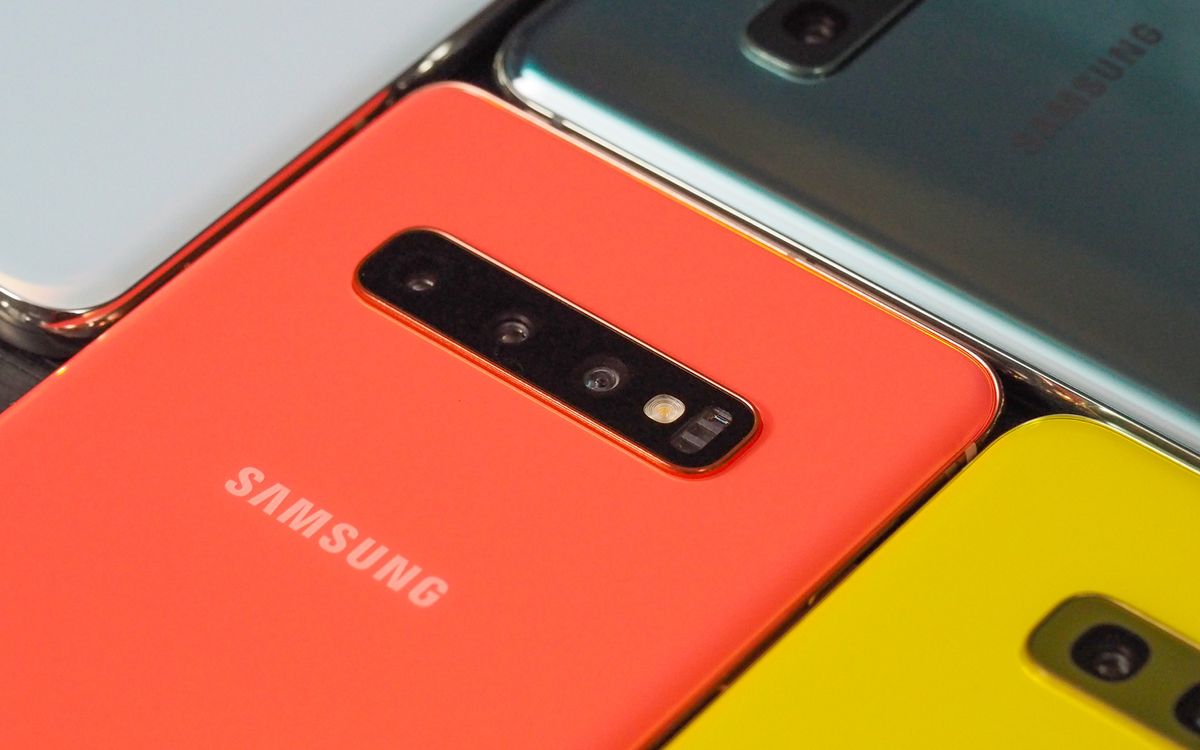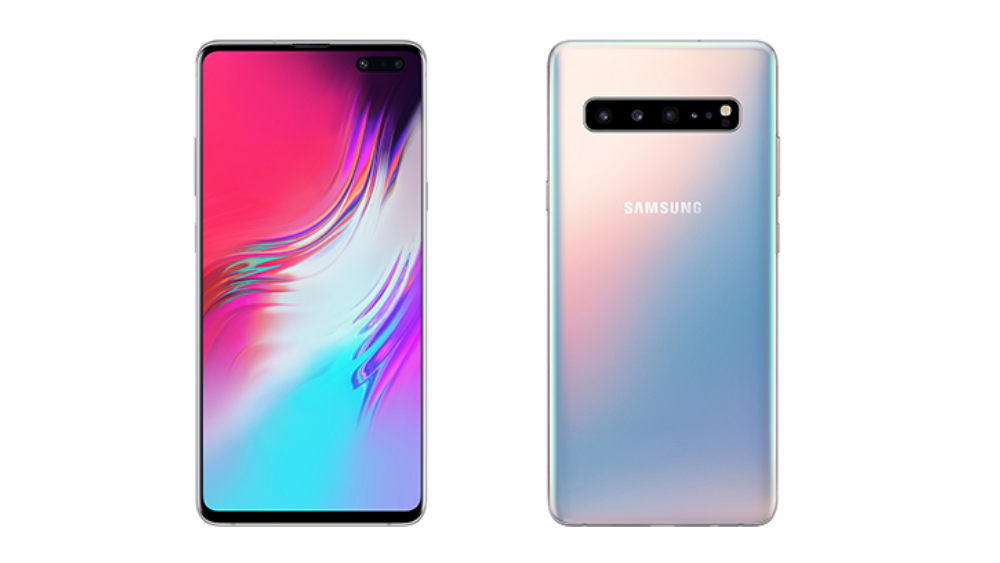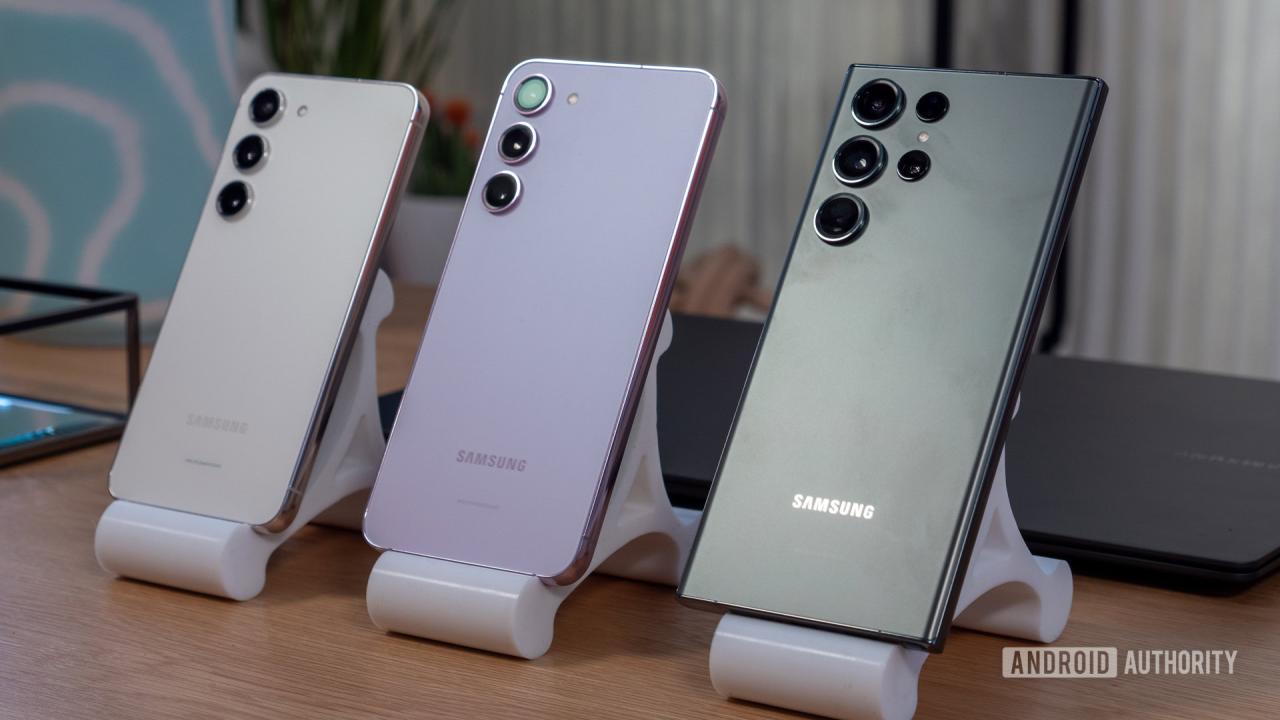Samsung s 10 stands as a beacon of innovation in the smartphone arena, captivating tech enthusiasts with its sleek design and robust features. It seamlessly blends style and functionality, promising an experience that is both visually stunning and performance-driven. As we delve into the intricacies of its design, camera prowess, display technology, and software capabilities, the Samsung S10 emerges not just as a device but as a statement of technological brilliance.
With its dimensions and build quality setting the stage, Samsung S10 showcases a harmonious balance of aesthetic appeal and durability. From the premium materials that shape its body to the thoughtful design choices that enhance usability, every aspect of the Samsung S10 is crafted to impress and elevate the user experience.
Design and Build Quality of Samsung S10: Samsung S 10
The Samsung S10 showcases a sophisticated design that reflects the brand’s commitment to quality and aesthetics. With its sleek dimensions and premium materials, the S10 stands out in the crowded smartphone market. The attention to detail in its construction contributes to both the device’s visual appeal and structural integrity.
The Samsung S10 features physical dimensions of 149.9 x 70.4 x 7.8 mm and weighs approximately 157 grams. This combination of size and weight makes the device comfortable to hold and use for extended periods. The device’s footprint is well-balanced, allowing for easy one-handed operation.
Materials and Construction
The build quality of the Samsung S10 is remarkable, utilizing high-end materials that enhance both durability and aesthetics. The front and back of the device are crafted from Gorilla Glass 6, providing robust protection against scratches and drops. The frame is made of aluminum, contributing to the phone’s lightweight yet sturdy feel.
The choice of materials not only elevates the visual appeal but also ensures that the S10 can withstand everyday wear and tear. This is particularly important for users who prioritize longevity in their devices.
Design Elements Comparison
When comparing the design elements of the Samsung S10 to its predecessors and competitors, several notable features emerge. The S10 incorporates a nearly bezel-less display, which enhances the immersive experience of its 6.1-inch Dynamic AMOLED screen.
– The Infinity-O display design, which features a small hole for the front camera, marks a shift from the traditional notch seen in earlier models and some competitor devices. This design choice maximizes screen real estate while maintaining an elegant aesthetic.
– The back of the S10 showcases a triple-camera system arranged in a horizontal layout, providing a modern look that contrasts with the vertical setups common in many other smartphones.
– The overall symmetry and refined lines of the S10’s design reflect Samsung’s evolution in smartphone aesthetics, moving towards a more streamlined and sophisticated appearance compared to the Galaxy S9 series.
The Samsung S10 not only competes effectively with other flagship devices but also sets a benchmark for design excellence in the smartphone industry. Its thoughtful construction and premium materials ensure that it remains relevant in the fast-evolving tech landscape.
Camera Features and Performance

The Samsung S10 showcases a sophisticated camera system designed to meet the needs of both casual photographers and professionals alike. With a combination of advanced hardware and intelligent software, it empowers users to capture stunning images in various environments.
The S10 is equipped with a triple rear camera setup that includes a 12 MP wide-angle lens, a 12 MP telephoto lens, and a 16 MP ultra-wide lens. This versatile arrangement allows users to switch seamlessly between different perspectives, enhancing the creative possibilities. Additionally, the front camera is a 10 MP lens, perfect for high-quality selfies and video calls.
Camera Modes and Their Functionalities
The Samsung S10 offers a range of camera modes that cater to various shooting scenarios, enhancing the user experience. Understanding these modes is key to maximizing the device’s photographic capabilities.
- Photo Mode: The default mode, designed for general photography. It features automatic settings optimized for most environments.
- Live Focus: This mode allows users to create a bokeh effect by blurring the background while keeping the subject in sharp focus, ideal for portraits.
- Pro Mode: For advanced users, Pro Mode grants manual control over settings such as ISO, shutter speed, and white balance, enabling precise adjustments.
- Super Steady: A feature for video recording that utilizes advanced stabilization technology, ensuring smooth footage even in fast-paced situations.
- Night Mode: This mode enhances low-light photography by combining multiple frames into one, resulting in brighter and clearer images.
- Food Mode: Specially designed for capturing culinary delights, this mode enhances colors and details to make food photos more appetizing.
The versatility of these modes allows users to adapt their shooting style depending on the subject and environment, ensuring high-quality results across various scenarios.
Performance in Different Lighting Conditions
The camera performance of the Samsung S10 is notably robust across a range of lighting conditions, providing users with reliable options for capturing images at any time of day.
In bright daylight, the S10 excels at producing sharp, vibrant images with excellent detail retention. The dynamic range is impressive, allowing for clarity in both highlights and shadows.
In low-light conditions, the Night Mode significantly enhances the camera’s performance. By taking multiple exposures and merging them, users can achieve well-lit images that retain detail and minimize noise. This is particularly evident in urban environments where artificial lighting is common.
In challenging lighting situations, such as backlighting or high-contrast scenes, the S10’s HDR capabilities effectively adjust the exposure, resulting in balanced images without losing detail in the bright and dark areas.
Overall, the Samsung S10 demonstrates exceptional camera features and performance, making it an excellent choice for photography enthusiasts and everyday users seeking quality and versatility in their mobile devices.
Display Technology and User Experience

The Samsung S10 is equipped with a stunning display that not only serves as a visual highlight but also significantly enhances the user experience. Featuring a 6.1-inch Dynamic AMOLED panel, the S10 presents a resolution of 3040 x 1440 pixels, which delivers a pixel density of approximately 550 pixels per inch. This level of detail ensures that images and text appear sharp and vibrant, paving the way for immersive viewing experiences whether you are watching videos, playing games, or browsing the web.
The impact of display features on user experience cannot be overstated. The S10’s Dynamic AMOLED technology allows for superior color accuracy and brightness levels, making it a standout choice among its contemporaries.
Display Specifications and Features, Samsung s 10
The display’s specifications provide insight into why the Samsung S10 has garnered acclaim for its visual capabilities. Let’s delve into the key attributes that define the display experience:
– Resolution: The 3040 x 1440 resolution ensures that graphics are rendered with exceptional clarity, making it ideal for high-definition media consumption.
– Panel Technology: Utilizing Dynamic AMOLED technology, the panel offers deeper blacks and a broader color spectrum compared to traditional LCDs.
– Brightness Levels: With peak brightness reaching up to 1200 nits, the S10 excels in bright outdoor conditions, enhancing visibility in various lighting scenarios.
– HDR Support: The inclusion of HDR10+ support means that users can experience high dynamic range content with enhanced contrast and vibrant colors.
The S10’s display also features an impressive DCI-P3 color gamut coverage, ensuring that colors appear true to life. This is particularly beneficial for professionals in photography and graphic design who rely on accurate color representation.
Comparison with Other Flagship Smartphones
When comparing the display of the Samsung S10 to other flagship smartphones released in the same era, several aspects stand out. The following table Artikels a direct comparison of key display specifications with other popular models:
| Smartphone | Display Size | Resolution | Panel Technology | Brightness (Peak) |
|---|---|---|---|---|
| Samsung S10 | 6.1 inches | 3040 x 1440 | Dynamic AMOLED | 1200 nits |
| Apple iPhone XS | 5.8 inches | 2436 x 1125 | Super Retina OLED | 1200 nits |
| Google Pixel 3 XL | 6.3 inches | 2960 x 1440 | OLED | 400 nits |
| OnePlus 7 Pro | 6.67 inches | 3120 x 1440 | Fluid AMOLED | 1000 nits |
From the comparison above, it’s evident that while many flagship smartphones boast impressive display technologies and specifications, the S10 holds its own with its superior resolution and peak brightness. The choice of Dynamic AMOLED is particularly advantageous, as it not only enhances color accuracy but also reduces eye strain with its ability to adjust color temperature based on ambient light.
In summary, the Samsung S10’s display technology is a key factor in its appeal, providing users with a visually captivating experience that stands out in a crowded market of flagship devices. The combination of high resolution, advanced panel technology, and impressive brightness levels creates a user experience that is both delightful and functional.
Software and Performance Capabilities

The Samsung Galaxy S10 not only boasts impressive hardware but also leverages advanced software features that elevate the user experience to new heights. The device operates on Samsung’s One UI, which is built atop Android, offering a streamlined interface designed for efficiency and ease of use. The combination of powerful hardware and intelligent software results in a smartphone that excels in performance across various tasks, from everyday usage to intensive gaming.
Software Features and Enhancements
Samsung’s One UI brings several enhancements that focus on usability and functionality. It features a clean design that emphasizes accessibility, allowing users to interact with their devices comfortably. The interface includes a Dark Mode, which reduces eye strain and prolongs battery life, particularly beneficial for AMOLED displays prevalent in the S10. Additionally, the software integrates advanced customization options, enabling users to tailor their home screen, app layouts, and even icon appearances.
Key software features include:
- App Pairing: Users can create shortcuts for multitasking by pairing two apps that can be launched simultaneously in split-screen mode.
- Digital Wellbeing: A suite of tools designed to help users manage their device usage and promote a healthier relationship with technology.
- Secure Folder: This feature allows users to keep sensitive data secure by isolating apps and files within a protected environment.
- Bixby Routines: An intelligent assistant that learns user habits and automates tasks based on daily routines.
Hardware Specifications and Performance Impact
The performance of the Samsung S10 is significantly bolstered by its impressive hardware specifications. It features the Snapdragon 855 (or Exynos 9820, depending on the region) alongside 8GB of RAM and an option for 128GB or 512GB of internal storage. This potent combination ensures smooth operation across various applications and multitasking scenarios.
The impact of these specifications is evident in various performance metrics:
- Processing Power: The Snapdragon 855 provides up to 45% improved performance compared to its predecessor, facilitating seamless operation of demanding applications.
- Graphics Rendering: The Adreno 640 GPU enhances gaming experiences with higher frame rates and improved graphics quality.
- Battery Optimization: With a 3400mAh battery, the S10 efficiently manages power consumption, especially under heavy workloads, ensuring longevity throughout the day.
Multitasking and Gaming Capabilities
The Galaxy S10 excels in multitasking, allowing users to efficiently switch between applications without lag or slowdowns. With features like App Pairing and the ability to run multiple apps simultaneously, users can easily manage various tasks, such as browsing the web while streaming a video.
In terms of gaming, the S10 is equipped to handle the latest mobile titles with high graphical demands. The device supports Game Launcher, a feature that optimizes performance by prioritizing resources for gaming applications. Users can expect:
- High Frame Rates: Smooth gameplay experience without stuttering or lag, even in graphically intense games.
- Advanced Cooling System: The S10 incorporates a heat pipe to dissipate heat during long gaming sessions, preventing thermal throttling.
- Game Tools: Essential features like screen recording and blocking notifications during gameplay enhance the gaming experience.
FAQ
What is the battery life of the Samsung S10?
The Samsung S10 typically offers a battery life of around 12 to 14 hours, depending on usage and settings.
Does Samsung S10 support wireless charging?
Yes, the Samsung S10 supports both wireless charging and reverse wireless charging for compatible devices.
What operating system does the Samsung S10 run on?
The Samsung S10 originally launched with Android 9.0 (Pie) and is upgradeable to later versions of Android.
Is the Samsung S10 water-resistant?
Yes, the Samsung S10 has an IP68 rating, making it water and dust resistant up to certain limits.
What storage options are available for the Samsung S10?
The Samsung S10 is available in storage options of 128GB and 512GB, with the ability to expand via a microSD card.
The Galaxy Note 2 marked a significant step in the evolution of smartphones, combining a large screen with stylus capabilities. This device not only enhanced productivity but also set the stage for future iterations, showcasing Samsung’s commitment to innovation in mobile technology.
Following the success of its predecessor, the Samsung Galaxy Note 7 aimed to push boundaries even further, introducing features like a stunning curved display and advanced security measures. Unfortunately, its release was marred by battery issues, teaching the industry valuable lessons in quality assurance.